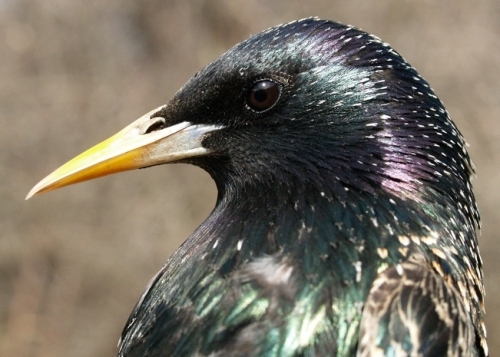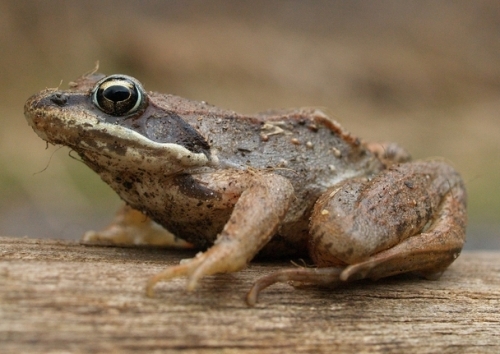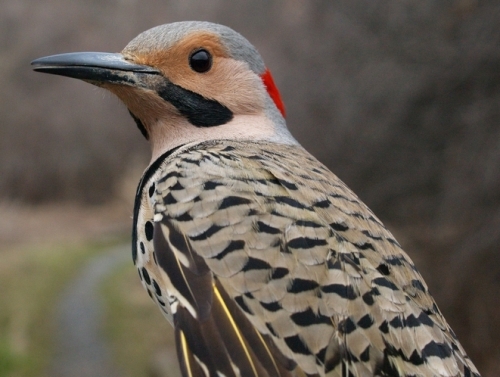|
|
THIS WEEK |
THIS SPRING |
2011 TOTAL |
SITE TOTAL |
|
# birds (and species) banded |
89 (20) |
89 (20) |
160 (24) |
31729 (107) |
|
# birds (and species) repeat |
7 (5) |
7 (5) |
15 (5) |
5522 (68) |
|
# birds (and species) return |
13 (6) |
13 (6) |
37 (6) |
844 (37) |
|
# species observed |
38 |
49 |
58 |
202 |
|
# net hours |
327.5 |
327.5 |
350.5 |
49967.6 |
|
# birds banded / 100 net hours |
27.2 |
27.2 |
45.6 |
63.5 |
|
|
Note: table does not include nocturnal banding (owls) |
Banders-in-charge: Simon Duval, Gay Gruner
Intern: Matthew Von Bornhoft
Assistants: David Anderson, Christine Barrie, Nicolas Bernier, Rui De Jesus, Jean Demers, Sarah Dixon, Tammy Eliott, Lisa Keelty, Le Duing Lang, Noemie Laplante, Barbara MacDuff, Francine Marcoux, Betsy McFarlane, Christine Murphy, Greg Rand, Clémence Soulard, Patricia Stotland, Rodger Titman.
Notes: The calendar dictated that our annual spring migration banding program began this week, but the weather didn't agree, with persistent cold and even snowy weather causing us to abandon plans for banding on two days and reducing hours on others (not to mention that part of the N1 net lane remains underwater, so we can't yet use it). Despite the less than ideal conditions, our list of species observed this spring took a substantial leap forward this week, perhaps in part due to the extra effort associated with expanding to full-morning operations after three weeks primarily limited to the daily census. Most notably though, we had a fantastic final day of the week, with 51 species observed, our highest ever total this early in spring (last year we didn't get a count that high until May 15, and in the previous three years it was always between May 2 and 8 when we cracked the 50-species mark for the first time). New species observed this week were Red-breasted Merganser, Common Loon, Osprey, Cooper's Hawk, Sharp-shinned Hawk, Broad-winged Hawk, Herring Gull, Great Black-backed Gull, Belted Kingfisher, Rock Pigeon, Barn Swallow, Cliff Swallow, Ruby-crowned Kinglet, Winter Wren, Vesper Sparrow, and Savannah Sparrow. All of these except Rock Pigeon, Cooper's Hawk, and Sharp-shinned Hawk were also new for 2011.
Naturally all 20 species banded this week were new for the season, and 70% of them were also new for the year. As is typical for spring, we had a fair number of returns. Among them were a female Tree Swallow using one of our nest boxes for a second consecutive year, and two birds banded in January 2010 that were recaptured during the first two days of this week - a Slate-colored Junco and an American Tree Sparrow. They weren't caught this past winter, so it's difficult to know whether they stayed at MBO again, or are just passing through now, having favoured other feeders nearby over the past several months. A more reliable local resident is Black-capped Chickadee 2500-65175, recaptured this week for the 22nd time since being banded on 2 August 2008! Finally, we recaptured a Song Sparrow banded as a juvenile on 25 July 2010, showing natal philopatry by returning to MBO.
This week’s
top 10
#
individuals banded |
mean # individuals observed daily |
1. Slate-colored Junco (23) [-] |
1. Canada Goose (126) [1] |
2. American Robin (13) [-] |
2. Bohemian Waxwing (42) [7] |
3. Fox Sparrow (12) [-] |
3. Red-winged Blackbird (41) [2] |
4. American Tree Sparrow (6) [-] |
4. Slate-colored Junco (29) [3] |
5. Cedar Waxwing (5) [-] |
5. Cedar Waxwing (24) [-] |
6. Black-capped Chickadee (4) [-] |
6. Greater Snow Goose (21) [-] |
7. Song Sparrow (3) [-] |
7. American Crow (21) [4] |
7. White-throated Sparrow (3) [-] |
8. Black-capped Chickadee (18) [7] |
7. Red-winged Blackbird (3) [-] |
9. Ring-billed Gull (17) [9] |
10. Yellow-shafted Flicker (2) [-]
10. Tree Swallow (2) [-]
10. European Starling (2) [-]
10. Northern Cardinal (2) [-] |
9. American Robin (17) [5] |
|
This week's list of top species banded is quite different from what is typical for week 4. Over the past six years, Ruby-crowned Kinglet has been the most frequently banded species in this week by far, with an average of nearly 16 per year - but this week we just had one! On the other hand, our six-year average for Slate-colored Junco at this time of year is just 5, but we more than quadrupled that this week. The number of American Robins, Fox Sparrows, and American Tree Sparrows were also well above average, while Red-winged Blackbird and Song Sparrow joined the kinglet as being scarcer than usual.
For the fifth time in seven years, Canada Goose was the most numerous species observed during week 4. The Bohemian Waxwings are lingering longer than ever before, making their first appearance in the top ten this late in the season, though unfortunately they managed to evade all our nets. Juncos were also more abundant than ever before in week 4, the elevated numbers of both juncos and Bohemian Waxwings perhaps reflecting the lingering winter weather. Cedar Waxwing and Snow Goose returned to the top ten this week, displacing Wood Duck and Song Sparrow (marking the first time ever that Song Sparrow hasn't cracked the top ten in week 4).
|

As abundant as European Starlings are, we only band them rarely at MBO. Above is one of the two banded this week, bringing our total to just 10 over a span of 7 years!
(Photo by Simon Duval)

Although we focus mostly on birds at MBO, at this time of year it's impossible to miss the chorus of frogs, including Wood Frogs like the one in this photo
(Photo by Simon Duval)
|



